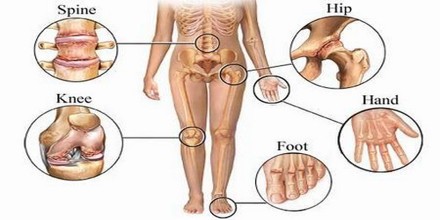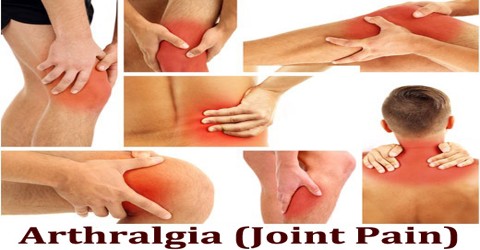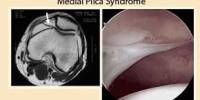Arthralgia (Joint Pain)
Definition
Arthralgia actually means joint pain. It is a combination of two Greek words – Arthro – joint and algos – pain. The pain can be dull, sharp, stabbing, throbbing or burning and vary in intensity from mild to severe. There are various causes of arthralgia including arthritis, injury, infection and other ailments. The usual cause is arthritis that involves inflammation of the joints.

It is a symptom of injury, infection, illnesses (in particular arthritis) or an allergic reaction to medication. According to MeSH, the term “arthralgia” should only be used when the condition is non-inflammatory, and the term “arthritis” should be used when the condition is inflammatory.
Treatment for arthralgia will vary depending on the joint that is affected, the severity of the pain, and the underlying cause. Treatment will address the underlying cause and alleviate or manage symptoms. Minor arthralgia can be treated at home with over-the-counter medications that reduce pain and swelling, or by icing, taking warm baths, or stretching.

Types of Arthralgia
Despite the convention Inflammatory arthralgia is commonly used to describe inflammatory joint pain. Many of these individuals may be actually suffering from osteoarthritis.
Osteoarthritis is a degenerative joint disease that is the commonest form of arthritis. In this condition there is loss of the cushion like cartilage that is placed between the ends of the bones at the joints to allow for smooth and painful movements.

Causes and Symptoms of Arthralgia
There are various causes of arthralgia. If it occurs with abrupt joint pain, it might be due to an injury. In case it develops and worsens over time, it might be brought about by an underlying ailment. The most common cause of arthralgia is arthritis, which is inflammation of the joints. Inflammation due to arthritis can cause joint pain.
Risk Factors for Arthralgia –
A number of factors increase the risk of developing arthralgia. Not all people with risk factors will get arthralgia. Risk factors for arthralgia include:
- Advanced age
- Obesity
- Participation in repetitive activities that put pressure on the joint
- Previous joint injury or surgery
The primary symptom of arthralgia is joint pain. The pain may be described as sharp, dull, stabbing, burning or throbbing. It may range in intensity from mild to severe. The joint pain may appear suddenly or develop and worsen over time. Common symptoms of arthralgia are:
- Burning feeling
- Itching feeling
- Numbness
- Pain or tenderness
- Redness, warmth or swelling
- Reduced mobility (range of motion of the joints)
- Stiffness
- Tingling or other unusual sensations
In some cases, arthralgia can be a serious condition that should be immediately evaluated in an emergency setting.

Diagnosis and Treatment of Arthralgia
Physical exam helps determine if the pain comes from the joint itself or is referred from nerve root impingement in the spine, nerve entrapment in the limb, or other pathology in the same extremity. Overall health status will be evaluated with a complete physical examination. Laboratory tests include erythrocyte sedimentation rate (ESR or sed rate), C-reactive Protein (CRP), a complete blood count (hemoglobin, hematocrit, red blood cell (RBC), and white blood cell (WBC) counts), and uric acid level. If the ESR and/or CRP is elevated, consistent with significant inflammation, then rheumatoid factor and antinuclear antibodies may also be tested. A complete blood chemistry panel may be done to evaluate health status.
In some cases, physical therapy may be beneficial. Steroid injections are a common treatment for joint inflammation. If needed, fluid may be removed from the affected joint in a procedure called joint aspiration (arthrocentesis). Arthralgia due to a broken bone may require surgery or casting. Some complementary treatments may help some people to better deal with arthralgia. These treatments, sometimes referred to as alternative therapies, are used in conjunction with traditional medical treatments. Complementary treatments are not meant to substitute for traditional medical care. Complementary treatments may include:
- Acupuncture
- Massage therapy
- Nutritional dietary supplements, herbal remedies, tea beverages, and similar products
- Yoga
Capsaicin, a substance found in chili peppers, may relieve joint pain from arthritis and other conditions. Side effects of capsaicin cream include burning or stinging in the area where it is applied. Another topical option is an arthritis cream containing the ingredient, methyl salicylate (Bengay).
















